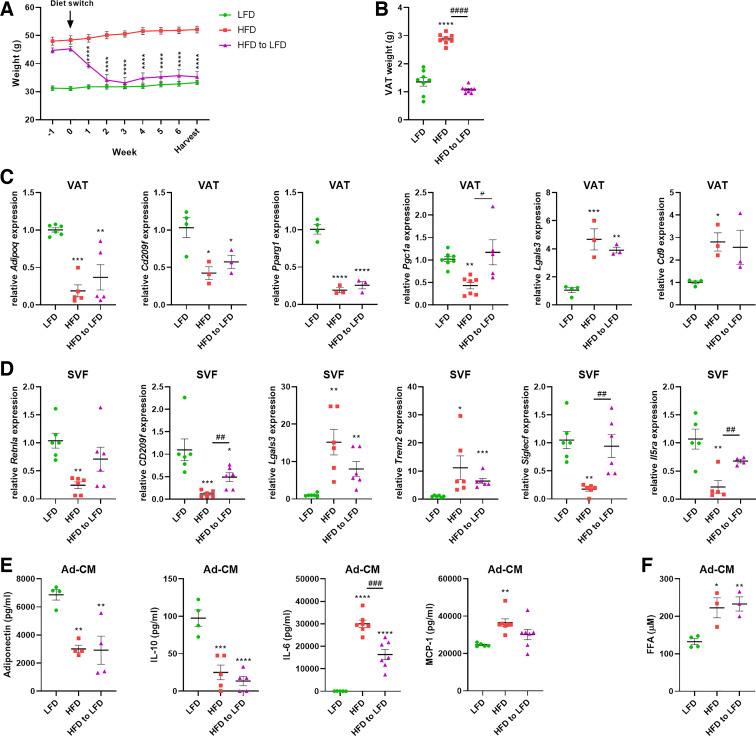Figure 1.
Diet-induced obesity and weight loss model in mice. Low-fat (LFD) and high-fat (HFD) diets were obtained preformulated from Research Diets and contain 10% and 60% kCal from fat, respectively. Male mice, maintained on these diets, were purchased from Jackson Labs, and one group of HFD-fed mice was switched to LFD for 6 wk. Diet-switched (HFD to LFD) mice rapidly lost weight and maintained body weights comparable to the LFD group for 6 wk before analysis (A). Diet-switched mice also exhibited a loss of total visceral adipose tissue (VAT) weight (B). mRNA expression was analyzed from VAT (C). Gene expression of myeloid cell markers was analyzed from the stromal vascular fraction (SVF) of VAT (D). Enriched primary adipocytes were cultured for 48 h and cell-free conditioned media (Ad-CM) was analyzed for cytokine secretion (E) and free fatty acid (FFA) content (F). n = 3–8 mice/group. Data were analyzed by 2-way ANOVA and Tukey’s multiple comparison test (A) or 1-way ANOVA and Dunnett’s multiple comparison test (B–F). *P < 0.05, **P < 0.01, ***P < 0.005, ****P < 0.001: significant differences compared with LFD. #P < 0.05, ##P < 0.01, ###P < 0.005, ####P < 0.001: significant differences between HFD and HFD to LFD.

